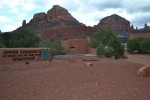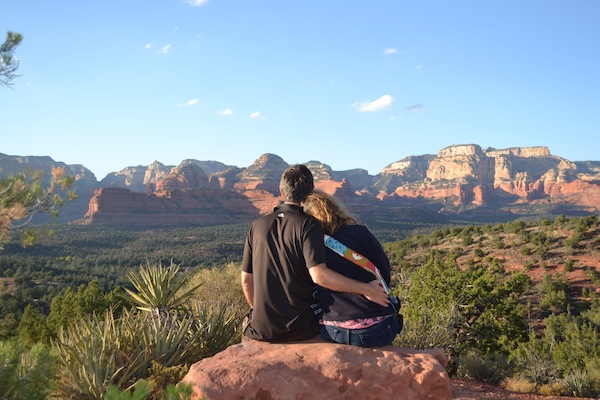קנדה נמצאת במקום העשירי והמכובד ואילו ישראל מדורגת רק במקום ה-71 והלא מכובד, במדד התחרות העולמי לתיירות ונסיעות. (צילום: reports.weforum.org)
קנדה נמצאת במקום העשירי והמכובד ואילו ישראל מדורגת רק במקום ה-71 והלא מכובד, במדד התחרות העולמי לתיירות ונסיעות. כך עולה מהדוח לשנת 2015 שכולל 141 מדינות. הדוח של הפורום העולמי מתפרסם אחת לשנתיים. עם זאת יש מקום לציין שקנדה נמצאת הרחק מאחור לגבי סוגיית המיסים הגבוהים הנגבים בשדות התעופה המקומיים, שמרביתם בבעלות הממשלה הפדרלית. העלויות הגבוהות כרוכות בדמי שכירות גבוהים והארנונה גבוהה. שדה התעופה היקר ביותר בקנדה הוא זה שבמונטריאול. ירידת מחירי הדלק וחולשתו של הדולר הקנדי משפיעים לטובה על ענף התעופה הקנדי, אך המיסים והיטלים גבוהים מצד הממשלה מונעים מחברות התעופה המקומיות, לעמוד בתחרות מול החברות הזרות. הנוסע הקנדי הוא זה שבסופו של דבר שמשלם את המחיר. מניסיוני האישי אני יכול לספר כי כרטיס מוונקובר לטורונטו וניו יורק היה זול בכ-200 דולר קנדי, לעומת כרטיס מוונקובר לטורונטו ומונטריאול.
עשר המדינות הראשונות במדד התחרות לתיירות ונסיעות העולמי הן: ספרד, צרפת, גרמניה, ארצות הברית, בריטניה, שווייץ, אוסטרליה, איטליה, יפן וכאמור קנדה עשירית. חמש המדינות האחרונות בדירוג העולמי הן: מאוריטניה, תימן, אנגולה, גינאה ובמקום ה-141 והאחרון צ’אד. בחלוקה לפי אזורים גיאוגרפים קנדה נמצאת במקום השני בצפון אמריקה והקריביים לאחר ארצות הברית. אחרונה באזור זה שכולל שש עשרה מדינות היא האיטי. במזרח התיכון מתוך שש עשרה מדינות מדינות ישראל שוב יוצאת רע, כיוון שהיא ממוקמת רק במקום השביעי. שש הראשונות לפניה: איחוד האמירויות הערביות, בחריין, מרוקו, ערב הסעודית ועומאן. במקום האחרון במזרח התיכון נמצאת תימן.
מחברי הדוח מציינים כי ב-2015 נרשם גדול תיירות ונסיעות למרות ההאטה הכלכלית בחלק ממדינות העולם. ענף הנסיעות והתיירות מהווה תשעה אחוזים מהתל”ג העולמי ועומד על שבעה טריליון דולר. לפי מחברי הדוח הגידול בענף התיירות והנסיעות עומד על כארבעה אחוזים מדי שנה.
הדוח מתחלק למספר תחומים בענף התיירות והנסיעות. אווירה עיסקית: סינגפור במקום הראשון, קנדה במקום ה-16, ישראל במקום ה-51 וונצואלה במקום האחרון. ביטחון ובטיחות: פינלנד במקום הראשון, קנדה במקום ה-21, ישראל במקום ה-99 וניגריה במקום האחרון, בריאות והגיינה: אוסטריה במקום הראשון, ישראל במקום ה-36, קנדה רק במקום ה-58 ומוזמביק במקום האחרון. משאבי אנוש ושוק העבודה: שווייץ במקום הראשון, קנדה במקום השביעי, ישראל במקום ה-39 ומאוריטניה במקום האחרון. מוכנות: פינלד במקום הראשון, קנדה במקום ה-27, ישראל במקום ה-32 וצ’אד במקום האחרון. מתן עדיפות לתיירות ונסיעות: מלטה במקום הראשון, קנדה במקום ה-36, ישראל במקום ה-64 ובורונדי מקום האחרון. פתיחות בינלאומית: סינגפור במקום הראשון, קנדה רק במקום ה-66, ישראל רק במקום ה-99 ואנגולה במקום האחרון. מחיר תחרותי: במקום הראשון והמפתיע איראן, קנדה הרחק מאחור במקום ה-124, ישראל במקום עוד יותר גרוע -136 ובמקום האחרון שווייץ. קיימות סביבתית: שווייץ במקום הראשון, קנדה במקום ה-26, ישראל רק במקום ה-101 ובמקום האחרון פקיסטן. תשתיות לתחבורה תעופתית: קנדה במקום הראשון, ישראל במקום ה-50 וצ’אד במקום האחרון. תשתיות לנמלים ותחבורה קרקעית: הונג קונג במקום הראשון, קנדה רק במקום ה-46, ישראל במקום ה-52 ומאוריטניה במקום האחרון. תשתיות לשירותי תיירות: אוסטריה במקום הראשון, קנדה במקום ה-14, ישראל במקום ה-72 ובורונדי במקום האחרון. משאבים טבעיים: ברזיל במקום הראשון, קנדה במקום העשירי, ישראל במקום ה-99 ובמקום האחרון האיטי. משאבי תרבות ותיירות עסקית: ספרד במקום הראשון, קנדה במקום ה-15, ישראל רק במקום ה-52 ולסוטו במקום האחרון.

 With her latest book, with 84 vignettes, she writes, “I decided to try a side of Israel that rarely receives attention – the creative, amusing, quirky and moving aspects of the country.” She used the services of Alon Galili, a guide, and John Harlow, a consultant. Many of her tales have appeared in the Jerusalem Post. Her husband, Charles Corman, was the book’s editor.
With her latest book, with 84 vignettes, she writes, “I decided to try a side of Israel that rarely receives attention – the creative, amusing, quirky and moving aspects of the country.” She used the services of Alon Galili, a guide, and John Harlow, a consultant. Many of her tales have appeared in the Jerusalem Post. Her husband, Charles Corman, was the book’s editor.

